Ship's anchor. Theory and designs
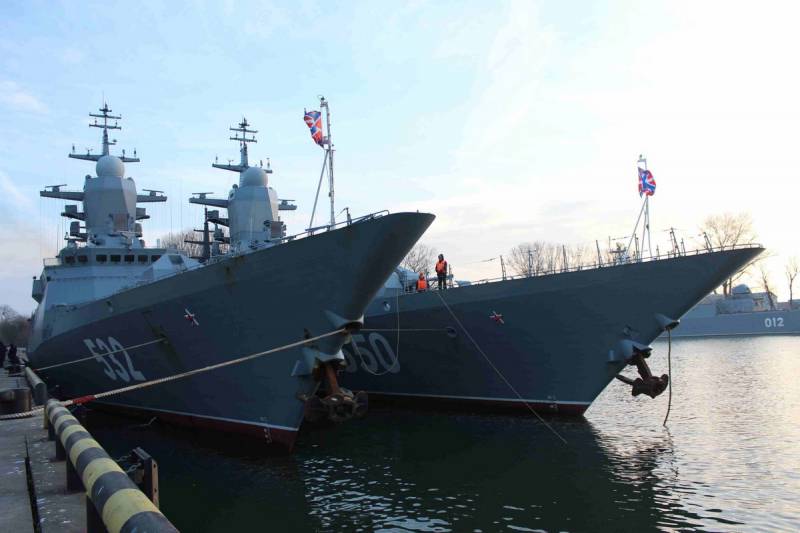
Corvettes pr. 20380 at the pier. Raised Hall system anchors are visible on the stems. Photo by the Russian Ministry of Defense
The standard appearance of a modern ship, regardless of its class and type, includes a number of different ship devices. One of its mandatory attributes is an anchor device. With its help, the vessel or ship is anchored and kept in the required place, regardless of the wind and current. In this case, the anchor and the anchor device as a whole may have different designs that provide certain advantages.
Anchor theory
At the level of the general concept, the anchor device is not complex. It includes a winch (capstan or windlass), its control system, anchor chain, the anchor itself, as well as a set of various accessories and parts. The purpose of the device determines its placement on the ship, as well as its configuration, type of anchor, etc.
To keep the vessel moored, the so-called anchor anchor In this case, the anchor device is located in the bow of the hull. In order to prevent the vessel from turning and holding it in a given position, smaller auxiliary anchors are used. Such devices are placed in the stern. There are also other types of anchor devices and anchors with other tasks, in different designs, etc.
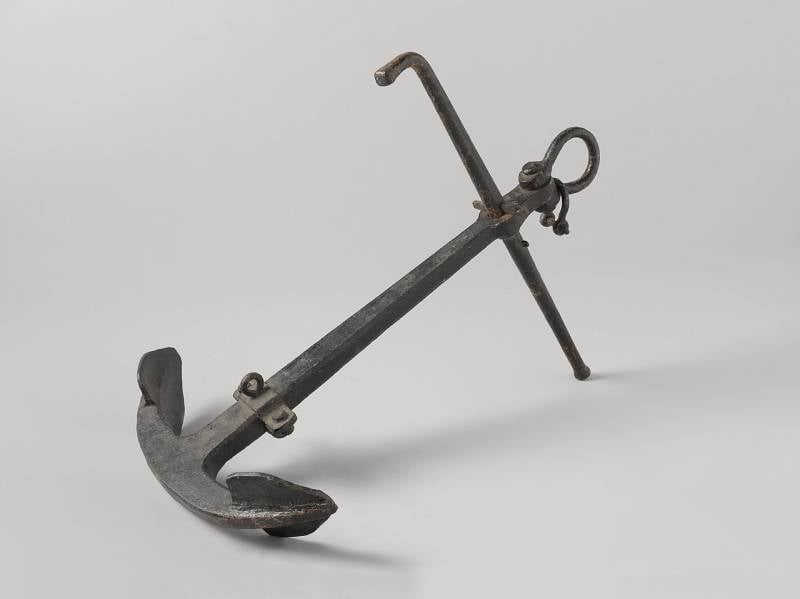
Admiralty anchor with a removable rod. Photo: Wikimedia Commons
The operation of the anchor device is quite simple. At the command of the crew, the capstan or windlass must etch the anchor chain and, with its help, lower the anchor to the bottom. Due to its mass and shape, the anchor adheres to the ground and resists attempts to move it. When using movable paws, the latter literally dig into the ground. In this position, the anchor is held in place and holds the chain to the vessel. It can only be removed by lifting the chain directly upward.
The key characteristic of any anchor is the so-called. holding force. It is the ratio of the force required to displace a horizontal anchor to its mass. The “anchor holding capacity” parameter is also used, which characterizes the force opposing the movement of the vessel under the influence of current and wind. The holding capacity is the product of the holding force and the mass of the anchor.
The holding force and holding capacity of an anchor are determined by several factors. This is the mass, material and design of the anchor itself, as well as the parameters and characteristics of the soil, the presence of foreign objects on it, etc. The length and mass of the etched anchor chain, as well as the degree of its tension, have a certain influence on the overall result.
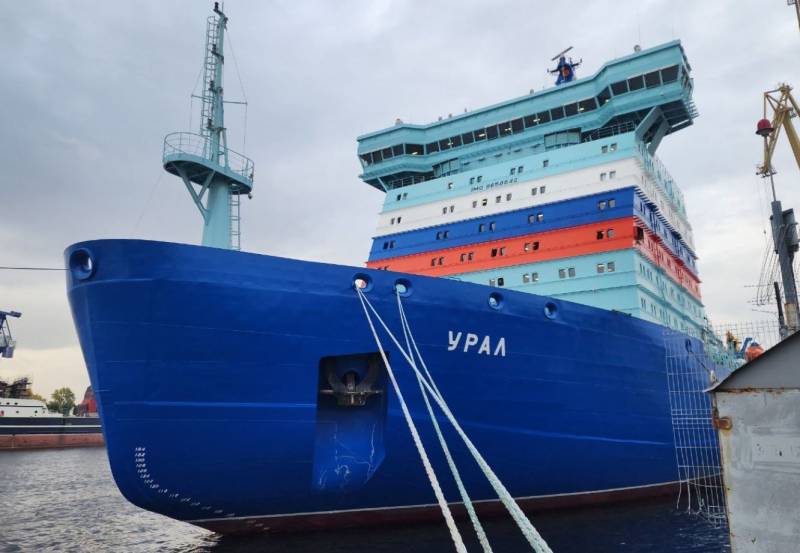
Icebreaker "Ural" with a Hall anchor. Photo USC
Design development
The very first in stories anchor devices were extremely simple. They used a stone of a suitable size tied with a rope as an anchor. The release and lifting of such an anchor was carried out manually. Such primitive designs are still used today, but only on small vessels and often in the absence of alternatives.
Later, more complex designs with increased efficiency appeared. Anchors have developed especially actively in recent centuries - against the backdrop of the general development of shipbuilding and shipping. As a result of these processes, a traditional anchor design was formed quite a long time ago, which was then only modified by introducing certain changes.
Modern and historical anchors of traditional appearance are made of metal. Casting is mainly used, but welded structures also exist. This makes it possible to obtain the required mass, strength and stability at a reasonable cost and manufacturability. A metal chain is used for the same reasons.
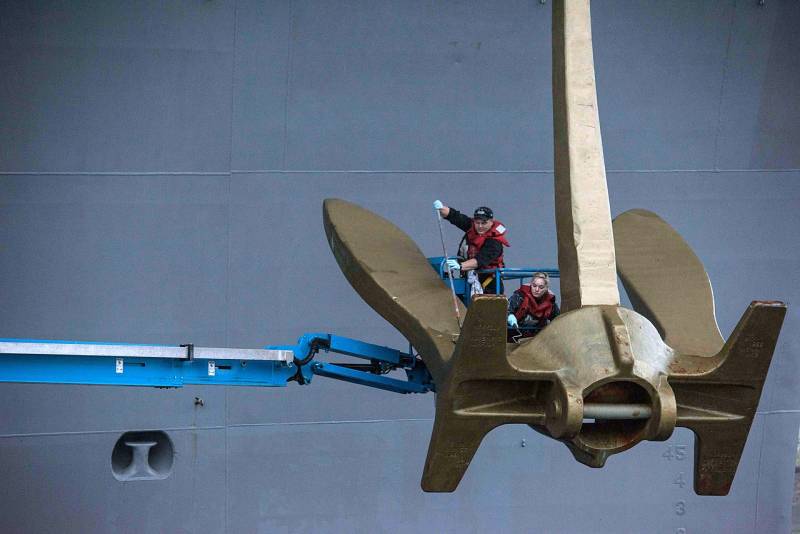
Anchor of the nuclear-powered aircraft carrier USS John C. Stennis (CVN 74). The dimensions and weight of the product correspond to the carrier ship. Photo by US Department of Defense
The anchor of the traditional design has an elongated central element, the so-called. a spindle to which other parts are connected. At one end of the spindle there is an eye and a bracket for attaching the chain, at the other there are so-called. horns. Horns and spindles can be crafted together; in this case, the place of their connection, the trend, is strengthened. Also at the bottom of the spindle a hinge can be placed on which there are rotating (movable) horns / paws.
To improve traction with the ground, wider paws are provided on the horns. In addition, a rod can be installed near the eye - a fixed or movable transverse element that does not allow the anchor to lie on the ground with its wide side and worsen its performance.
The dimensions and weight of the anchor are determined taking into account the characteristics of the carrier vessel. Small vessels can get by with an anchor tens of centimeters long and weighing kilograms. Large ships with a displacement of tens of thousands of tons, in turn, require multi-meter and multi-ton products.
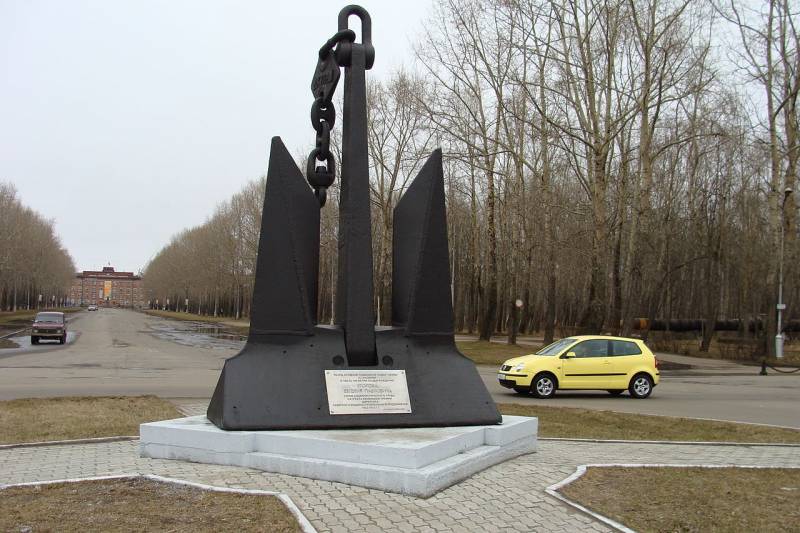
An AC-14 type anchor, removed from the SSBN Project 941 "Akula" and installed as a monument. Photo: Wikimedia Commons
Dead anchors are usually built according to the traditional two-horned scheme. Auxiliaries of different species may have only one horn of a similar design. Also in some cases, dead anchors are used, which have a simplified shape and do not have horns. They are designed to hold a ship or other object for a long time. Often there is no provision for lifting them after use.
To release and lift the anchor, modern anchor devices use a variety of winches. They have electric or hydraulic drives of the required power, horizontal (windlass) or vertical (spire) drums, etc. In all cases, the parameters of the mechanism are selected taking into account the characteristics of the chain and armature. The anchor device also includes spare anchors and chains, means for their installation, etc.
The main varieties
The development of the traditional design of a ship's anchor has been going on for several centuries, and during this time a lot of its variants have appeared. Some of them have become very widespread and have become the de facto standard in shipbuilding. Moreover, each of the designs found application in those areas where they could show the best results.
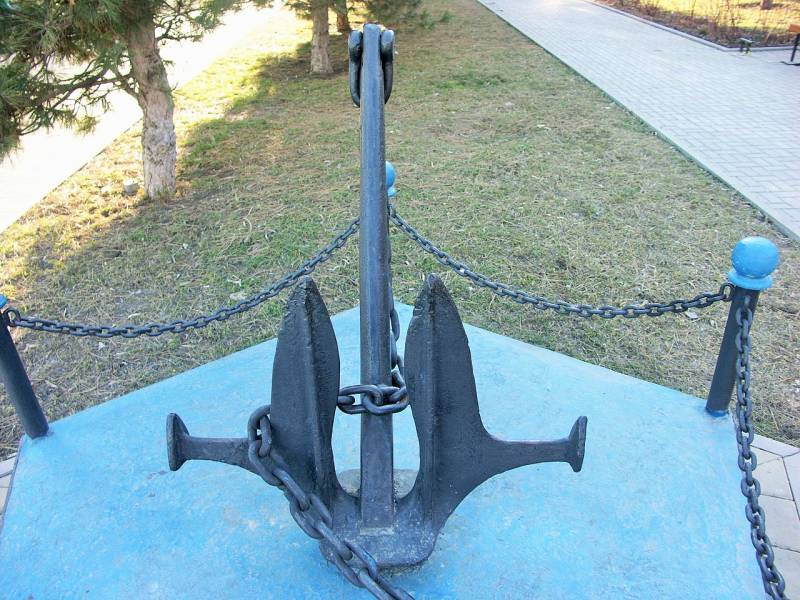
A memorial sign in the form of Matrosov's anchor. Photo: Wikimedia Commons
Probably the most famous type of anchor is the so-called. Admiralty It was created at the beginning of the XNUMXth century. for British fleet, quickly proved its effectiveness and became widespread. The Admiralty anchor has a two-horned design with fixed legs and a rod in the form of a transverse rod. In improved versions, the rod could be moved or removed for safe transportation of the anchor on board the ship.
At the end of the XNUMXth century. The Hall anchor appeared, which seriously influenced shipbuilding. He received massive horns and paws, hinged on a spindle through a box. Initially, it had a fixed rod, but then this part was abandoned. After this modification, the anchor became retractable: it became possible not only to lift it to the side of the ship, but also to partially retract it into the hawse. The operation of the device was greatly simplified, and the Hall anchor became one of the standards for a long time. In particular, this design is still actively used by our shipbuilders.
Also in Great Britain the so-called Smith's anchor. The lower part of its spindle has an eye into which an axle with legs is inserted. Unlike Hall's design, the Smith anchor moves only the arms, without a central box. This anchor showed characteristics at the level of its predecessor, but did not have its disadvantages and was easier to manufacture.
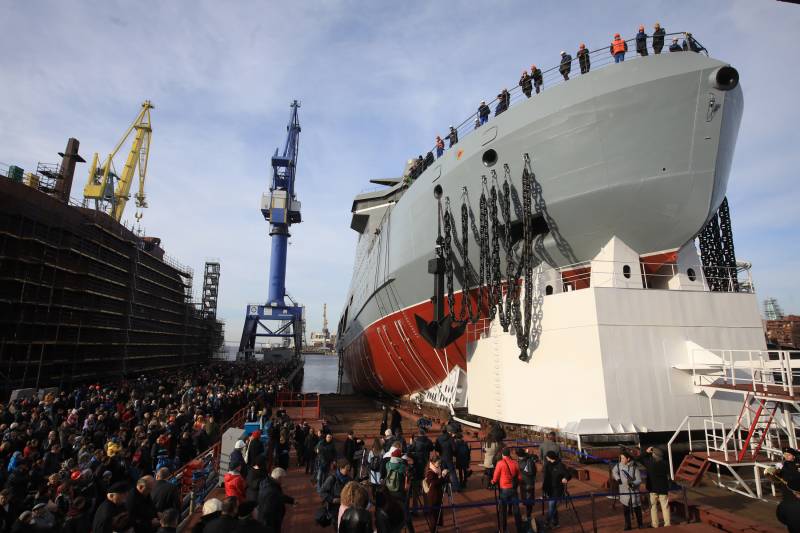
Icebreaker "Ivan Papanin" pr. 23550 with a four-horned anchor. Photo "Admiralty Shipyards"
An interesting anchor design was proposed in the forties of the XNUMXth century. Soviet engineer I. Matrosov. He took the Hall anchor with a movable box as a basis, lengthened its legs, and also equipped them with side bosses with flanges. When the paws are buried in the ground, the flanges act as an axis and improve the mechanics of this process, which has a positive effect on the main characteristics of the anchor.
In the fifties, British engineers developed the AC-14 anchor, which became another development of Hall's design. It is distinguished by a thin spindle and a large heavy box of increased width. The paws are located parallel to the spindle. The moving part of such an anchor was initially hollow and filled with water, but then a solid version was introduced. The special shape of the AC-14 made it possible to improve the basic characteristics in comparison with the original Hall anchor.
The problem and its solutions
Thus, the seemingly simple task of holding a ship in place is characterized by a certain complexity, and also requires special attention and the use of various ideas and technologies. However, over several centuries and even millennia, shipbuilders were able to find optimal solutions and developed a number of different anchor designs.
Thanks to this, modern engineers and designers have a large choice and can use the design that best suits the tasks and requirements of a particular project. As a result, the vessel or ship receives an optimal anchor device, and the crew in any conditions can count on reliable support in the roadstead, on the high seas, etc.
Information